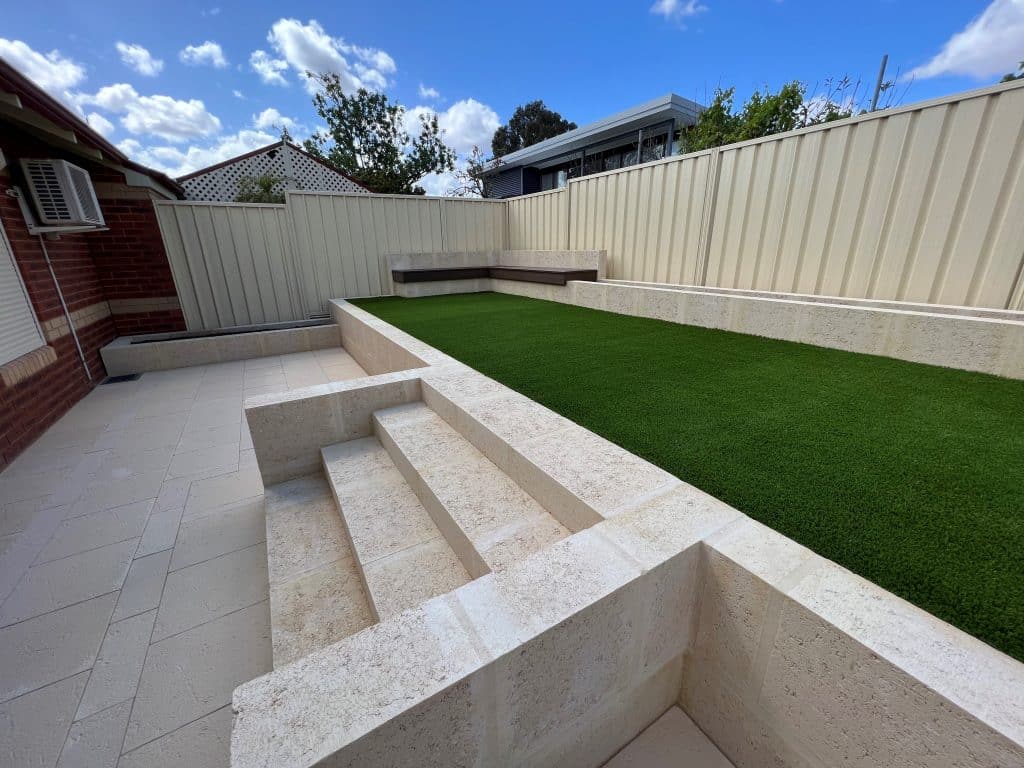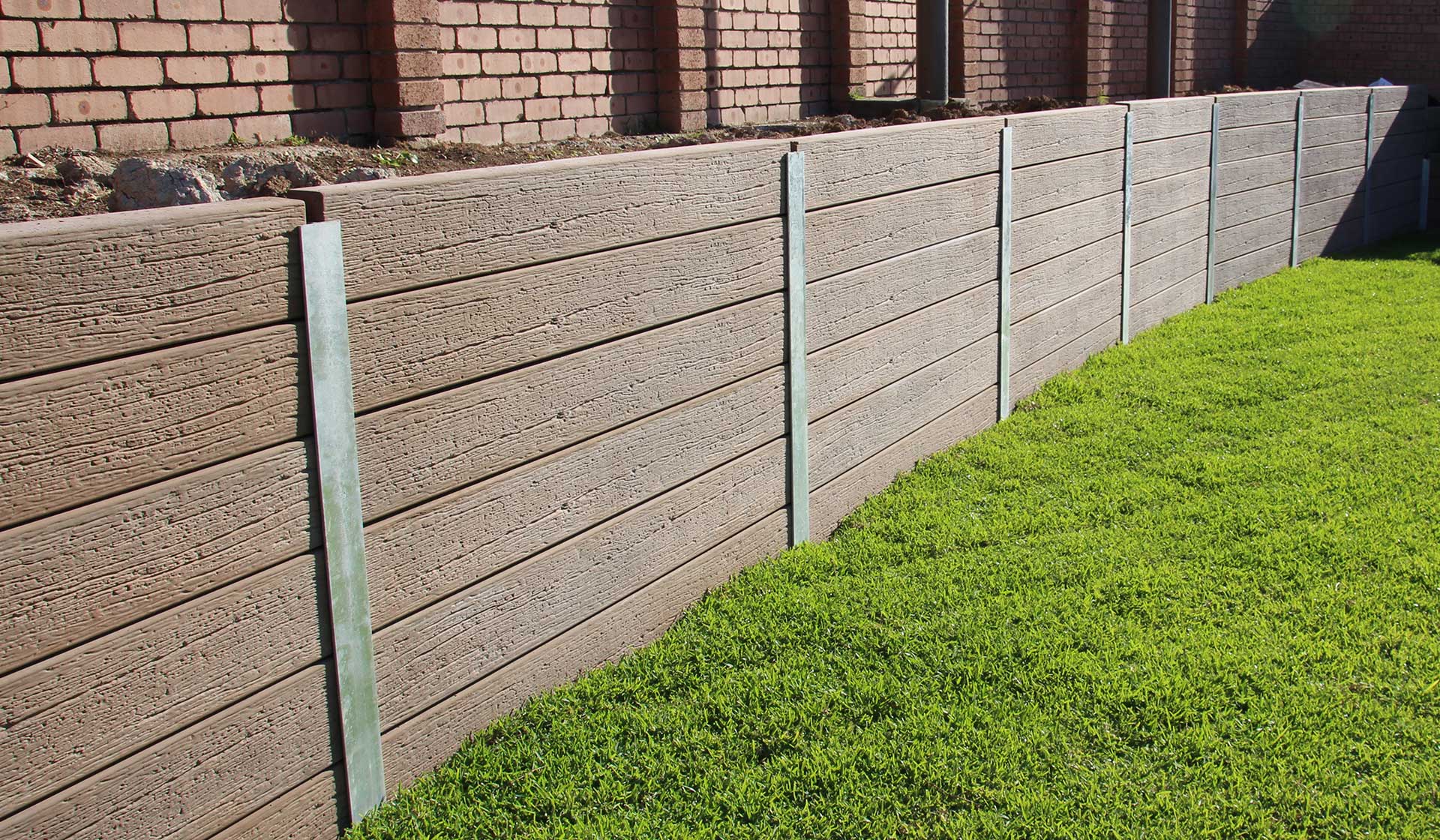Ensuring Architectural Honesty: The Value of Correctly Created Retaining Walls in Avoiding Slope Failure
In the realm of civil engineering and building, the importance of correctly built keeping walls in averting slope failure can not be downplayed. These frameworks act as essential safeguards against the all-natural pressures that can undercut slopes and trigger potentially devastating consequences. Understanding the meticulous style considerations, building approaches, and maintenance techniques related to maintaining walls is basic in guaranteeing their effectiveness and longevity. By discovering the detailed interplay between these components, a deeper comprehension of the crucial function that keeping wall surfaces play in protecting structural honesty and stopping slope failing emerges. Retaining Walls Sunshine Coast.
Duty of Retaining Walls in Security
The necessity of maintaining wall surfaces in making certain slope stability is extremely important in civil engineering techniques. Retaining wall surfaces offer a critical role in protecting against soil erosion, handling water drainage, and maintaining the structural honesty of inclines. By supporting vertical or near-vertical quality changes, keeping wall surfaces aid to redistribute side stress put in by the dirt, thereby decreasing the threat of slope failure.
One key function of preserving walls is to neutralize the force of gravity acting on the soil mass behind them. This is achieved through appropriate style and building and construction, which takes into consideration factors such as soil type, wall height, drain arrangements, and prospective additional charge lots. By effectively keeping soil within defined boundaries, these structures assist to support inclines and stop landslides.
Moreover, preserving walls add to the aesthetic appeals of landscapes while giving useful advantages. They can develop terraced degrees for landscape design, support streets or structures on hillsides, and boost the total use of sloped surface. In significance, keeping wall surfaces play an essential duty in preserving slope stability and making sure the security and durability of civil engineering tasks.
Variables Affecting Wall Performance
Elements that affect the performance of retaining wall surfaces consist of dirt homes, wall design, and exterior tons. Soil buildings play a critical function in figuring out the stability and efficiency of a keeping wall. Variables such as dirt kind, cohesion, inner friction angle, and groundwater problems can influence how well a wall surface maintains the soil behind it. The layout of the keeping wall is an additional essential factor that influences its effectiveness. Appropriate wall surface style takes into consideration aspects like wall surface height, wall surface type (e.g., gravity walls, cantilever walls), support materials, drain systems, and construction strategies to guarantee the wall surface can endure the side pressure put in by the retained dirt. In addition, external tons, such as additional charge loads from surrounding structures or web traffic, seismic pressures, and water pressure, need to be meticulously assessed throughout the design and building stages to guarantee the wall surface can sufficiently stand up to these external forces. By considering these elements thoroughly, designers can build maintaining wall surfaces that efficiently protect against incline failure and guarantee lasting architectural integrity.
Design Considerations for Retaining Walls
Incorporating the crucial aspects of soil residential properties and exterior tons into the structural layout process is vital for developing reliable maintaining walls that ensure incline stability. When designing preserving walls, engineers have to carefully review the features of the surrounding dirt, including its kind, drain, and compaction homes. Comprehending these soil properties is crucial for establishing the ideal wall surface support, thickness, and height needed to hold up against the side stress applied by the dirt mass.
Furthermore, exterior tons such as surcharge loads from close-by frameworks or traffic, as well as seismic pressures, need to be taken right into account throughout the layout phase. These lots can considerably affect the stability and performance of a keeping wall surface, requiring making use of proper style strategies and products to mitigate potential failure dangers.
In addition, the selection of suitable materials, such as concrete, rock, or wood, need to line up with the visual requirements and site-specific problems. Element of safety and security factors to consider, drain stipulations, and construction techniques are likewise crucial facets that affect the total layout and capability of retaining walls in avoiding slope failure. By thoroughly taking into consideration these design considerations, engineers can guarantee the architectural integrity and long-lasting security of retaining walls.

Building Best Practices for Durability
When constructing keeping walls for ideal sturdiness and longevity, adherence to industry-standard techniques and meticulous focus to information are extremely important. To make certain the toughness of a preserving wall surface, correct website preparation is important. This includes sufficient compaction of the dirt, appropriate drain systems, and guaranteeing the wall's structure is audio. Using high-grade products, such as cinder blocks or all-natural stone, is critical for the long life of the framework. Furthermore, employing competent professionals with experience in creating maintaining walls can dramatically influence the resilience of the end product.
Integrating support techniques, such as geogrids or steel bars, can boost the structural stability of the retaining wall surface and avoid potential failings. Correct backfilling procedures, including compaction and water drainage considerations, are likewise crucial for the wall surface's durability. Regular maintenance and assessments are advised to resolve click this link any signs of wear, erosion, or structural issues immediately. By adhering to these building and construction best practices, keeping wall surfaces can hold up against the test of time and successfully stop incline failure.
Significance of Proper Upkeep
Normal upkeep is necessary for protecting the structural integrity and functionality of preserving wall surfaces in time. Overlooking maintenance can bring about concerns such as erosion, fractures, or perhaps total failure of the wall surface, threatening the security of the slope it sustains. To make certain that maintaining walls proceed to do their intended feature properly, routine inspections need to be carried out to identify any kind of indications of damage. These assessments can help in finding very early indication of potential issues, allowing for prompt repair work to be lugged out before the concerns escalate (Retaining Walls Sunshine Coast).

Final Thought
In verdict, preserving wall surfaces play a crucial role in guaranteeing structural stability and stopping slope failure. By thinking about elements influencing wall efficiency, sticking to make factors to consider, complying with construction ideal practices, and executing proper maintenance, the resilience of keeping walls can be made best use of. Retaining Walls Sunshine Coast. It is vital to identify the relevance of appropriately built keeping walls in keeping security this article and avoiding potential threats linked with slope failure
Variables that affect the effectiveness of retaining wall surfaces include dirt properties, wall surface style, and external lots. Appropriate wall layout thinks about elements like wall surface height, wall surface type (e.g., gravity wall surfaces, cantilever walls), support products, drainage systems, and building and construction methods to ensure the wall surface can endure the side pressure put in read this article by the preserved soil. By taking into consideration these factors adequately, engineers can create retaining wall surfaces that efficiently protect against slope failing and ensure long-lasting architectural integrity.
Upkeep jobs may consist of clearing water drainage systems to prevent water accumulation behind the wall surface, repairing any type of visible fractures or damages, and ensuring that the wall is complimentary from greenery that might apply pressure on the structure. By taking into consideration factors influencing wall surface efficiency, sticking to design factors to consider, following construction finest practices, and executing appropriate upkeep, the resilience of maintaining wall surfaces can be made best use of.